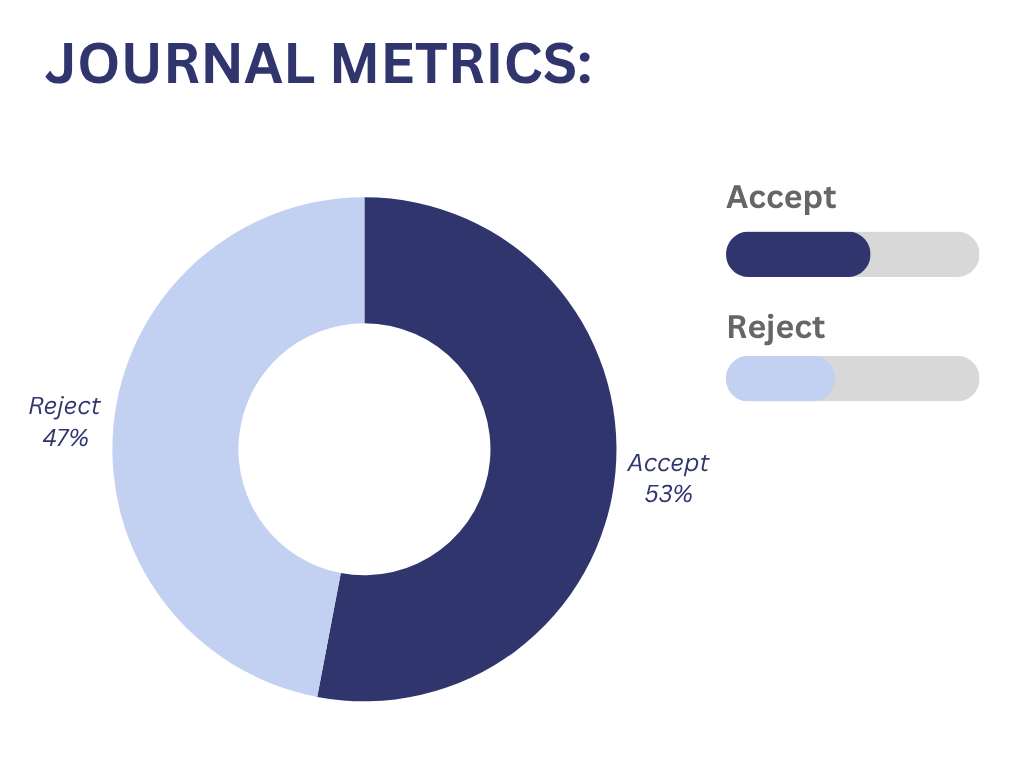Ranking of Energy Consumption Reduction Technologies in the Steel Industry in Developing Countries
Abstract
The steel industry is a cornerstone of global economies, but also one of the most energy-intensive sectors, contributing significantly to CO₂ emissions. This issue is exacerbated in developing countries, where rapid industrial growth, outdated technologies, and resource limitations drive higher energy consumption. This study identifies and ranks energy-consumption-reduction technologies for the steel industry in developing economies, focusing on their applicability and potential for significant energy savings. The research integrates the Fuzzy Delphi Method (FDM) and Interval Type-2 Fuzzy Best-Worst Method (IT2F-BWM) to screen and prioritize technologies under conditions of uncertainty. Seven key technologies were validated by an expert panel, including waste heat recovery systems, hydrogen injection, and improvements to continuous casting. The IT2F-BWM model effectively handles expert judgment imprecision and provides a robust ranking of technologies based on criteria such as energy efficiency, economic feasibility, and environmental impact. The findings reveal that technologies such as waste heat recovery and hydrogen injection offer the most significant potential for energy savings (10-50%) and contribute to global decarbonization goals. This study provides policymakers and industry leaders with a practical decision-making tool, offering a pathway to sustainable energy practices tailored to the unique challenges of developing economies. Future research should explore dynamic modeling and cross-country comparisons further to refine energy efficiency strategies for the steel industry.
Keywords:
Steel industry, Energy consumption, Fuzzy delphi method, Interval type-2 fuzzy best-worst method, Developing countriesReferences
- [1] Basson, E. (2023). World steel in figures 2023. https://worldsteel.org/
- [2] Iron, I. E. A. (2020). Steel Technology Roadmap. International energy agency: paris, france. https://iea.blob.core.windows.net/
- [3] Firoozi, A. A., Firoozi, A. A., Oyejobi, D. O., Avudaiappan, S., & Flores, E. S. (2024). Emerging trends in sustainable building materials: Technological innovations, enhanced performance, and future directions. Results in engineering, 24, 103521. https://doi.org/10.1016/j.rineng.2024.103521
- [4] Li, D., Dong, W., Hou, Z., Wang, H., & Duan, Y. (2025). Characteristic Analysis of the Evolution of the Temporal and Spatial Patterns of China’s Iron and Steel Industry from 2005 to 2023. Sustainability, 17(19), 8623. https://doi.org/10.3390/su17198623
- [5] Net, I. E. A. (2021). Zero by 2050: a roadmap for the global energy sector. Int energy agency, 224. https://iea.blob.core.windows.net/
- [6] Li, Z., Åhman, M., Algers, J., & Nilsson, L. J. (2025). Decarbonizing the Asian steel industries through green Hot Briquetted Iron trade. Resources, conservation and recycling, 219, 108275. https://doi.org/10.1016/j.resconrec.2025.108275
- [7] Ahmad, I., Arif, M. S., Cheema, I. I., Thollander, P., & Khan, M. A. (2020). Drivers and barriers for efficient energy management practices in energy-intensive industries: a case-study of iron and steel sector. Sustainability, 12(18), 7703. https://doi.org/10.3390/su12187703
- [8] Li, X., Sun, W., Zhao, L., & Cai, J. (2018). Material metabolism and environmental emissions of BF-BOF and EAF steel production routes. Mineral processing and extractive metallurgy review, 39(1), 50–58. https://doi.org/10.1080/08827508.2017.1324440
- [9] Alshehhi, I., Alnahdi, W., Ali, M., Bouabid, A., & Sleptchenko, A. (2023). Assessment of waste heat recovery in the steel industry. Journal of sustainable development of energy, water and environment systems, 11(2), 1–22. https://doi.org/10.13044/j.sdewes.d10.0440
- [10] Na, H., Sun, J., Qiu, Z., He, J., Yuan, Y., Yan, T., & Du, T. (2021). A novel evaluation method for energy efficiency of process industry—A case study of typical iron and steel manufacturing process. Energy, 233, 121081. https://doi.org/10.1016/j.energy.2021.121081
- [11] John, N., Wesseling, J. H., Worrell, E., & Hekkert, M. (2022). How key-enabling technologies’ regimes influence sociotechnical transitions: The impact of artificial intelligence on decarbonization in the steel industry. Journal of cleaner production, 370, 133624. https://doi.org/10.1016/j.jclepro.2022.133624
- [12] Richardson-Barlow, C., Pimm, A. J., Taylor, P. G., & Gale, W. F. (2022). Policy and pricing barriers to steel industry decarbonisation: A UK case study. Energy policy, 168, 113100. https://doi.org/10.1016/j.enpol.2022.113100
- [13] OECD. (2025). OECD steel outlook 2025. https://www.oecd.org/
- [14] Wang, D., Gong, X., Gong, H., Wang, Y., Ye, Z., & Gong, Z. (2025). Do steel industrial policies make a difference? LCA-based quantification of environmental impacts and cost benefits from steel production in China. Journal of cleaner production, 528, 146736. https://doi.org/10.1016/j.jclepro.2025.146736
- [15] Shahabuddin, M., Brooks, G., & Rhamdhani, M. A. (2023). Decarbonisation and hydrogen integration of steel industries: Recent development, challenges and technoeconomic analysis. Journal of cleaner production, 395, 136391. https://doi.org/10.1016/j.jclepro.2023.136391
- [16] Pang, Z., Bu, J., Yuan, Y., Zheng, J., Xue, Q., Wang, J., … & Zuo, H. (2024). The Low-Carbon Production of Iron and Steel Industry Transition Process in China. Steel research international, 95(3), 2300500. https://doi.org/10.1002/srin.202300500
- [17] Muhammad, S., Pan, Y., Agha, M. H., Umar, M., & Chen, S. (2022). Industrial structure, energy intensity and environmental efficiency across developed and developing economies: The intermediary role of primary, secondary and tertiary industry. Energy, 247, 123576. https://doi.org/10.1016/j.energy.2022.123576
- [18] Block, J. H., Sharma, P., & Benz, L. (2023). Stakeholder pressures and decarbonization strategies in Mittelstand firms. Journal of business ethics, 193(3), 511–533. https://doi.org/10.1007/s10551-023-05576-w
- [19] García‐Sánchez, I. M., Núñez‐Torrado, M., Aibar‐Guzmán, C., & Aibar‐Guzmán, B. (2025). Beyond climate targets: Exploring when and how female directors influence corporate decarbonization transparency. Business strategy and the environment, 34(3), 3892–3912. https://doi.org/10.1002/bse.4183
- [20] Liu, G., An, H., Sun, X., Li, Y., Wang, H., & Li, W. (2025). Assessing the multiscale causal effects and heterogeneity between futures prices in different segments of China’s steel industry chain. Applied economics, 1–19. https://doi.org/10.1080/00036846.2025.2449837
- [21] Zhang, Y. (2024). Circular economy innovations: Balancing fossil fuel impact on green economic development. Heliyon, 10(18). https://doi.org/10.1016/j.heliyon.2024.e36708
- [22] Mohammadi, A., & Maghsoudi, M. (2025). Bridging perspectives on artificial intelligence: a comparative analysis of hopes and concerns in developed and developing countries. AI & society, 1–22. https://doi.org/10.1007/s00146-025-02331-9
- [23] Yousuf, M. U., Irshad, M. A., & Umair, M. (2024). Identifying barriers and drivers for energy efficiency in steel and iron industries of Karachi, Pakistan: insights from executives and professionals. Energy nexus, 14, 100284. https://doi.org/10.1016/j.nexus.2024.100284
- [24] Wang, Y., Umair, M., Oskenbayev, Y., & Saparova, A. (2024). Digital government initiatives for sustainable innovations, digitalization, and emission reduction policies to balance conservation impact [presentation]. Natural resources forum. https://doi.org/10.1111/1477-8947.12570
- [25] Ibekwe, K. I., Umoh, A. A., Nwokediegwu, Z. Q. S., Etukudoh, E. A., Ilojianya, V. I., & Adefemi, A. (2024). Energy efficiency in industrial sectors: A review of technologies and policy measures. Engineering science & technology journal, 5(1), 169–184. https://www.fepbl.com/index.php/estj/article/view/742/933
- [26] Cui, J., Meng, G., Zhang, K., Zuo, Z., Song, X., Zhao, Y., & Luo, S. (2025). Research progress on energy-saving technologies and methods for steel metallurgy process systems—A review. Energies, 18(10), 2473. https://doi.org/10.3390/en18102473
- [27] Andikan, U. U., Baalah, M. P. G., & Audu, J. A. (2024). Innovations in process optimization for environmental sustainability in emerging markets. International journal of multidisciplinary research updates, 8(02), 49–63. https://elibrary.ru/item.asp?id=74919610
- [28] Ma, H., Du, N., Zhang, Z., Lyu, F., Deng, N., Li, C., & Yu, S. (2017). Assessment of the optimum operation conditions on a heat pipe heat exchanger for waste heat recovery in steel industry. Renewable and sustainable energy reviews, 79, 50–60. https://doi.org/10.1016/j.rser.2017.04.122
- [29] Ramirez, M., Epelde, M., de Arteche, M. G., Panizza, A., Hammerschmid, A., Baresi, M., & Monti, N. (2017). Performance evaluation of an ORC unit integrated to a waste heat recovery system in a steel mill. Energy procedia, 129, 535–542. https://doi.org/10.1016/j.egypro.2017.09.183
- [30] Zhang, H., Wang, H., Zhu, X., Qiu, Y. J., Li, K., Chen, R., & Liao, Q. (2013). A review of waste heat recovery technologies towards molten slag in steel industry. Applied energy, 112, 956–966. https://doi.org/10.1016/j.apenergy.2013.02.019
- [31] Park, G. T., Koh, S. U., Jung, H. G., & Kim, K. Y. (2008). Effect of microstructure on the hydrogen trapping efficiency and hydrogen induced cracking of linepipe steel. Corrosion science, 50(7), 1865–1871. https://doi.org/10.1016/j.corsci.2008.03.007
- [32] Zhang, H., Yao, X., & Han, Y. (2024). When is the right time to invest in hydrogen metallurgy projects for iron and steel enterprises? International journal of hydrogen energy, 87, 1011–1022. https://doi.org/10.1016/j.ijhydene.2024.09.097
- [33] Irving, W. R. (2024). Continuous casting of steel. CRC Press. https://books.google.com/books
- [34] Louhenkilpi, S. (2024). Continuous casting of steel. In Treatise on process metallurgy (pp. 343–383). Elsevier. https://doi.org/10.1016/B978-0-323-85373-6.00009-0
- [35] Lee, M., Moon, K., Lee, K., Hong, J., & Pinedo, M. (2024). A critical review of planning and scheduling in steel-making and continuous casting in the steel industry. Journal of the operational research society, 75(8), 1421–1455. https://doi.org/10.1080/01605682.2023.2265416
- [36] Cui, H., Sun, J., Zhang, J., Ji, C., Wang, G., & Liu, Q. (2025). Large eddy simulation of novel EMBr effect on flow pattern in thin slab casting mold with multi-port SEN and ultra-high casting speed. Journal of manufacturing processes, 133, 448–465. https://doi.org/10.1016/j.jmapro.2024.11.077
- [37] Lu, J., Pan, W., Wang, W., & Dou, K. (2024). Full-Process numerical simulation of flow, heat transfer and solidification for hot stamping steel manufactured via thin slab continuous casting process. Metallurgical and materials transactions b, 55(5), 3237–3253. https://doi.org/10.1007/s11663-024-03177-0
- [38] Kong, Y., Ning, H., Huang, Y., Zhou, M., Zeng, G., Cheng, K., … & Liu, Z. (2025). High-temperature corrosion of Ni-based cladding layer in simulated coal-biomass co-firing environment. Journal of materials research and technology, 39, 4181-4191. https://doi.org/10.1016/j.jmrt.2025.10.111
- [39] Dzhezhulei, V. O., Beztsennyi, I. V, Bondzyk, D. L., & Dunayevska, N. I. (2025). Technology of co-firing coal and biomass: features, current state, and prospects. Natsional’nyi hirnychyi universytet. naukovyi visnyk, (4), 46–54. https://doi.org/10.33271/nvngu/2025-4/046
- [40] Zhao, Z., Yao, X., Xu, K., & Li, J. (2025). High-temperature corrosion characteristics and mechanisms of heating surfaces under ash deposition conditions in coal/biomass Co-firing utility boilers. Journal of the energy institute, 102227. https://doi.org/10.1016/j.joei.2025.102227
- [41] Long, H., Zhu, D., Pan, J., Li, S., Yang, C., & Guo, Z. (2024). Advanced processing techniques and impurity management for high-purity quartz in diverse industrial applications. Minerals, 14(6), 571. https://doi.org/10.3390/min14060571
- [42] Huang, H., Guan, M., Wang, K., Zhao, J., & Yang, Q. (2024). Research on the coal saving and emission reduction potential of advanced technologies in China’s iron and steel industry. Energy for sustainable development, 78, 101373. https://doi.org/10.1016/j.esd.2023.101373
- [43] Hao, H., Wu, H., Wei, F., Xu, Z., & Xu, Y. (2024). Scrap Steel Recycling: A Carbon Emission Reduction Index for China. Sustainability, 16(10), 4250. https://doi.org/10.3390/su16104250
- [44] Yang, X., Yang, H., He, Y., Ma, L., Li, Z., & Ni, W. (2025). The impact of the dynamic relationship among three types of scrap steel on long-term forecasting of scrap recycling: A method introducing steel flow allocation matrix into dynamic material flow analysis. Thermal science and engineering progress, 66, 103971. https://doi.org/10.1016/j.tsep.2025.103971
- [45] Naghipour, M. S., Rahim, Z. A., & Iqbal, M. S. (2024). A 5G competency model based on the fuzzy Delphi method. Journal of infrastructure, policy and development, 8(10), 6788. https://doi.org/10.24294/jipd.v8i10.6788
- [46] Danacı, M., & Yıldırım, U. (2023). Comprehensive analysis of lifeboat accidents using the Fuzzy Delphi method. Ocean engineering, 278, 114371. https://doi.org/10.1016/j.oceaneng.2023.114371
- [47] Rejeb, A., Rejeb, K., Keogh, J. G., & Zailani, S. (2022). Barriers to blockchain adoption in the circular economy: a fuzzy Delphi and best-worst approach. Sustainability, 14(6), 3611. https://doi.org/10.3390/su14063611
- [48] Dong, J., & Wan, S. (2024). Type-2 interval-valued intuitionstic fuzzy matrix game and application to energy vehicle industry development. Expert systems with applications, 249, 123398. https://doi.org/10.1016/j.eswa.2024.123398
- [49] Wu, Q., Zhou, L., Chen, Y., & Chen, H. (2019). An integrated approach to green supplier selection based on the interval type-2 fuzzy best-worst and extended VIKOR methods. Information sciences, 502, 394–417. https://doi.org/10.1016/j.ins.2019.06.049
- [50] Hu, J., Zhang, Y., Chen, X., & Liu, Y. (2013). Multi-criteria decision making method based on possibility degree of interval type-2 fuzzy number. Knowledge-based systems, 43, 21–29. https://doi.org/10.1016/j.knosys.2012.11.007
- [51] Alimohammadlou, M., & Sharifian, S. (2023). Industry 4.0 implementation challenges in small-and medium-sized enterprises: an approach integrating interval type-2 fuzzy BWM and DEMATEL. Soft computing-a fusion of foundations, methodologies & applications, 27(1). https://doi.org/10.1007/s00500-022-07569-9
- [52] Ahmad Basri, M. A. F., Wan Ismail, W. S., Kamal Nor, N., Mohd Tohit, N., Ahmad, M. N., Mohamad Aun, N. S., & Mohd Daud, T. I. (2024). Validation of key components in designing a social skills training content using virtual reality for high functioning autism youth—A Fuzzy Delphi method. PloS one, 19(4), e0301517. https://doi.org/10.1371/journal.pone.0301517


